A4.8 Utilities (Water, Gas, Electricity)¶
How to pay water, electricity, and gas bills in the UK?
TenLitCat reminds you that paying for water, electricity, and gas bills in the UK generally requires a UK bank account, as all payments need to be linked to a UK bank card. The utility companies can set up direct debit for automatic payments, though you can also choose to pay manually each time you receive a bill by logging in yourself.
When renting in the UK, student accommodation usually includes all bills (water, electricity, gas, and internet). However, if you rent other types of properties, you'll typically need to pay these bills yourself. TenLitCat prefers to pay each time a bill isreceived. If you set up direct debit, remember to cancel the automatic payments with your UK bank account before leaving the UK after your studies. If you don't, the utility companies will continue to deduct payments automatically. A classmate of TenLitCat once forgot to cancel the direct debit for electricity after moving house in the UK. The next tenant used hundreds of pounds worth of electricity, and the money was automatically taken from their bank account. Although they immediately cancelled the direct debit with their bank, the former tenant never repaid them.
Actually, paying for utilities like water, electricity, gas, and internet in the UK isn't particularly complicated. You just need to register an account and make payments. However, every time you move, you'll need to set up new utility accounts. When registering for water, electricity, and gas, use your own name for all accounts – you don't need to use the landlord's or letting agent's name.
Generally, when renting through an agency, you'll be responsible for paying your own water, electricity, and gas bills. However, some landlords include all bills in the rent, and sometimes the rent is surprisingly cheap. For example, one of TenLitCat's classmates was lucky enough to find a British landlord who rented to them at a price of around £200 per month, including all water, electricity, gas, and internet bills, with shared common areas. The downside was it was quite far from the university. TenLitCat visited their home – the environment was a typical foreign household, and their room was very small but fully equipped. While the price was very cost-effective, other aspects of the living situation were less ideal.
In comparison, TenLitCat is rather envious of another classmate's luck. They met a university teacher who happened to have a house for rent near the campus, also with bills included, costing just over £300 per month, paid quarterly. TenLitCat also visited this property – it was definitely worth it. Apart from the small room and having three flatmates to share the bathroom with, there were hardly any drawbacks. It was close to the university, and importantly, the teacher often helped them out. Although their journey to the UK was quite bizarre and fraught with difficulties, the outcome was excellent. At the time, TenLitCat was utterly astonished, as their own rent worked out to £500-600 per month. Remember, in the UK, rent isn't calculated over 12 months like in China – it's calculated weekly.
TenLitCat reminds everyone to remember to ask the landlord or letting agent in advance whether water, electricity, gas, and internet bills are included or not, and how to pay them. They will usually assist you.

The image above shows a water bill from Affinity Water. Using this water company's bill as an example, the corresponding numbers mean:
Customer number: This is your personal account number with the water company. You need to keep this safe, as you will be required to provide it when contacting the water company or making payments online.
Date: The issue date of the bill.
Account type: This indicates whether the water usage for your property is metered or unmetered.
Water supply address: The address of your property. Remember to check if the letters and numbers are correct. If there is an error, you can contact them by phone or via their official website to amend it.
Balance from last bill: The remaining balance or any outstanding amount from your previous water bill. UK water companies typically operate on a system of adjusting for overpayments or underpayments. If you overpaid last time, it will be deducted from your next bill.
Your payments: Your payment(s) towards the last bill.
Your balance before this bill: The total amount you owed for water, covering all charges between your last bill and this one.
This bill: How much this current bill will cost.
Current balance: Your total current amount due, or the total outstanding balance.
There are two main ways water charges are calculated in the UK:
One method is to pay based on the actual volume of water used.
The other method involves paying a fixed annual amount for water, regardless of usage – essentially unlimited water (though excessive, wasteful usage is still discouraged and may have limits). Most households with multiple occupants tend to choose this second payment method. Note that paying water charges in the UK typically includes both the water supply fee and the wastewater (sewage) charge.
There are many water supply companies in the UK, and they are organised by region. Each area has its corresponding water company. You can ask your landlord or letting agent, your neighbours, or simply wait for a water bill to arrive. In my case, the letting agent didn't know which water company served our area either and told me to wait for the bill. It took a very long time to arrive. Once it did, I registered a new account using the details on the bill and then made the payment.
Generally, when international students rent property in the UK, it's highly unlikely the property will be brand new and never have had a water company associated with it. Therefore, you typically won't need to choose a water company yourself.
For example, where I live, searching revealed the water company is called Severn Trent:
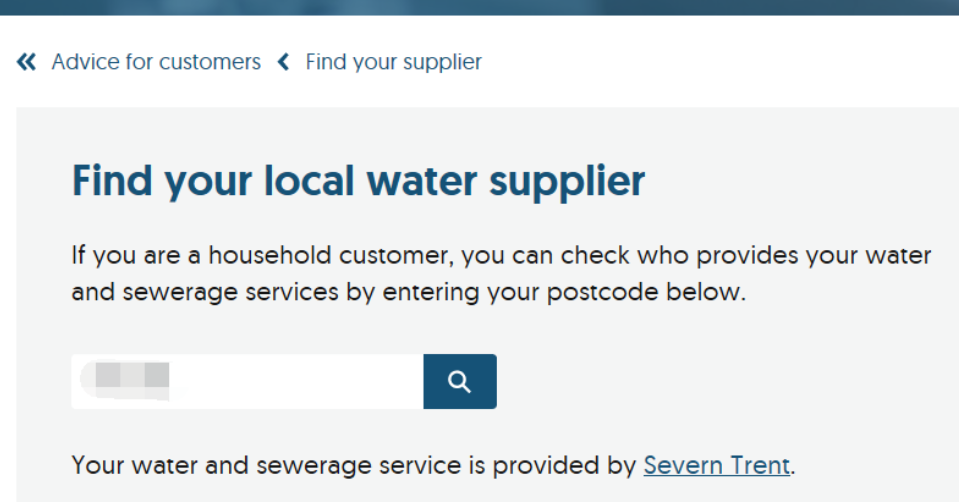
As shown in the chart below, the average combined water and sewerage charges for water companies in England and Wales are:
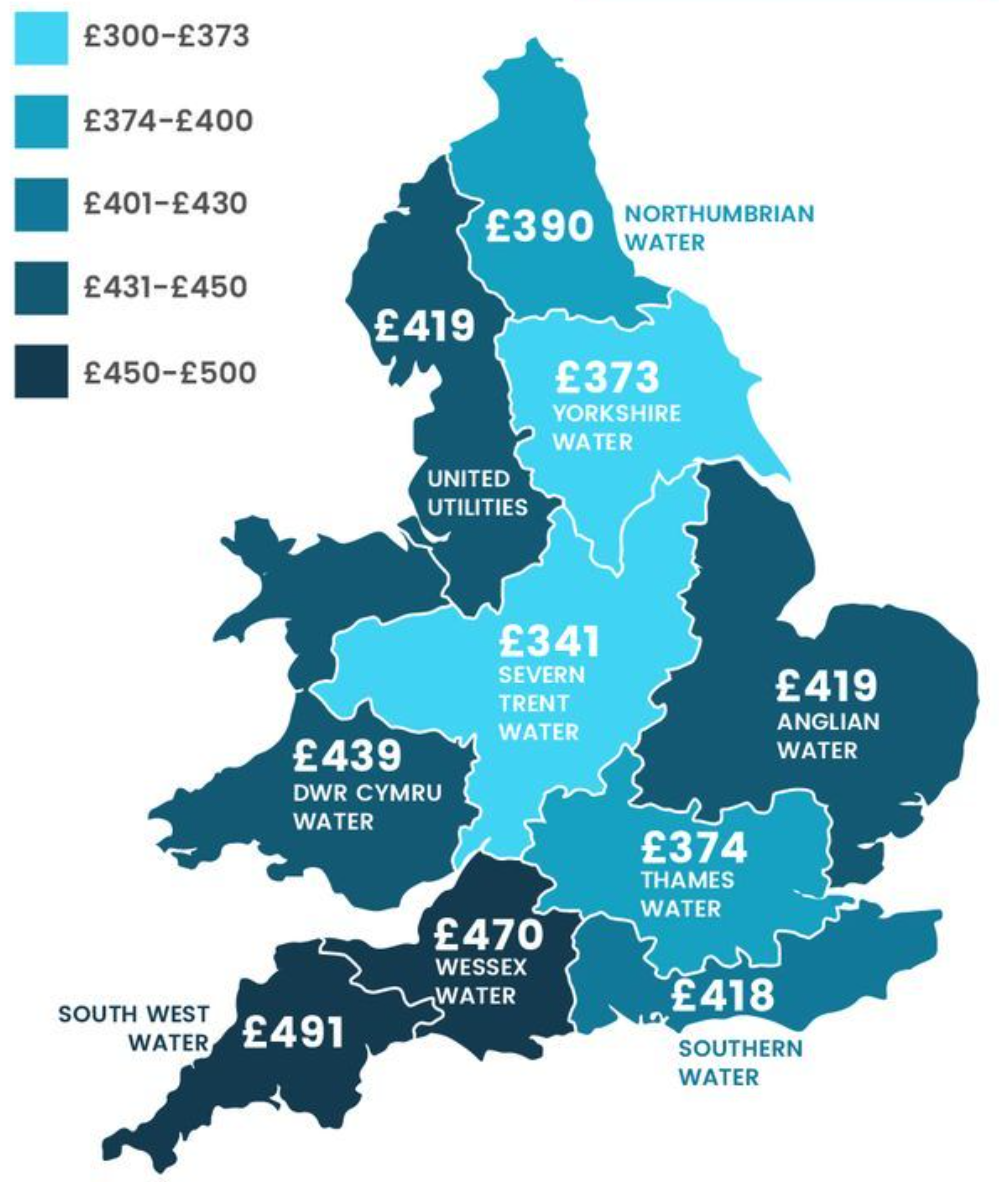
The payment methods for water companies in different regions of the UK can vary slightly, but they are generally similar. The typical ways to pay your water bill include:
Paying the water bill directly via bank transfer using a credit or debit card.
Making a payment over the phone, having your bank card and water account number ready.
Setting up an account on the website of your water supply company to choose either direct debit or to manage and make payments through your account.
Paying at a bank or a Post Office.
Essentially, opting for the third method is quite convenient. However, it's also fine to make a bank transfer to the account specified each time you receive a bill. Generally, besides paper bills, you will also receive electronic bills sent to the email address you used during registration.
TenLitCat reminds you that you must use the official website of the specific water company supplying your property to set up an account or follow their billing instructions for payment. It's best not to choose to have someone else pay on your behalf; paying yourself is the most straightforward. Of course, if you set up a direct debit, remember to cancel it later. Also, ensure you don't delay or miss payments each time, as late or missed payments can affect your personal credit history.
Specifically, TenLitCat strongly warns: never believe anyone offering discounted or preferential rates for paying your water, electricity, gas, or tuition fees on your behalf. It's all fraudulent. Payments for UK water, electricity, and gas go directly to the respective companies; there are no situations where you get a discount on these payments. Except for internet bills which might have promotional offers clearly stated upfront, discounts on the other utilities are simply not possible. Similarly, tuition fees cannot be paid at a discount. The only reduction possible is if you receive a scholarship, which directly reduces the amount you owe – for example, if your tuition is £11,000 and you get a £2,000 scholarship, you pay £9,000 directly to the university. There are never discounts. Always use the official payment methods provided by your university for tuition fees.
If you believe someone who offered a discount has genuinely paid your fees on your behalf, based on TenLitCat's years of experience studying abroad, there are generally several scenarios:
Firstly, payments made by credit card can sometimes be reversed within a certain period. This means you might receive a screenshot and even official confirmation that the payment was made, but it wasn't actually processed successfully and can be cancelled later. If you don't discover this in time, it can significantly impact your personal credit or your student registration status.
Secondly, it's a long-term scam where the fraudster initially gives you small favours or discounts. After building trust by helping you pay a few small utility bills, they might then offer a large discount, like 40-50% off, for paying a full semester's or year's tuition, or rent. Alternatively, they might lure you into paying a large sum like tuition or rent directly to them. Scammers constantly update their methods. They might even show you scanned copies of their passport, BRP, or student card to gain your trust. According to TenLitCat's experience, please be assured these documents are stolen from other real students, not the scammer's own. The scammer steals other students' identification details to show you. Even their social media feeds might be copied from real students. Paying these fees on your behalf often requires you to provide personal information, which gives the scammer an opportunity to use your details for further fraud or other illicit purposes.
TenLitCat knows of a case where a junior student's WeChat identity was copied by a scammer who created several fake accounts. The scammer operated undetected in a WeChat group for almost a year before being accidentally discovered. The real student personally exposed the scammer in the group, but the students who had been tricked couldn't get their money back. TenLitCat has encountered not only fake WeChat accounts but also fake Weibo accounts, fake QQ accounts, and even forged university emails and websites. So, always check email sender addresses and website URLs carefully, looking closely at the letters and checking for any strange punctuation or other discrepancies.
Thirdly, the person paying on your behalf might be using stolen credit or debit cards, or involved in money laundering or other illegal activities. If large sums are involved or the activity is discovered, you could face serious consequences, including potentially being prosecuted, as UK authorities may not believe you were unaware. Also, remember, if someone pretending to be the police, the embassy, etc., calls claiming you are involved in illegal activity in the UK and can even recite your personal details like passport number, address, and school – don't believe them. Their ultimate goal is to get money from you. The embassy, police, and similar authorities will not directly demand money from you over the phone, nor will they typically initiate contact in this manner for such purposes. The phone number you see, even if it appears to be the embassy's real number, can be spoofed by scammers. This is a type of telecom fraud.
The image below shows the payment methods for Southern Water:
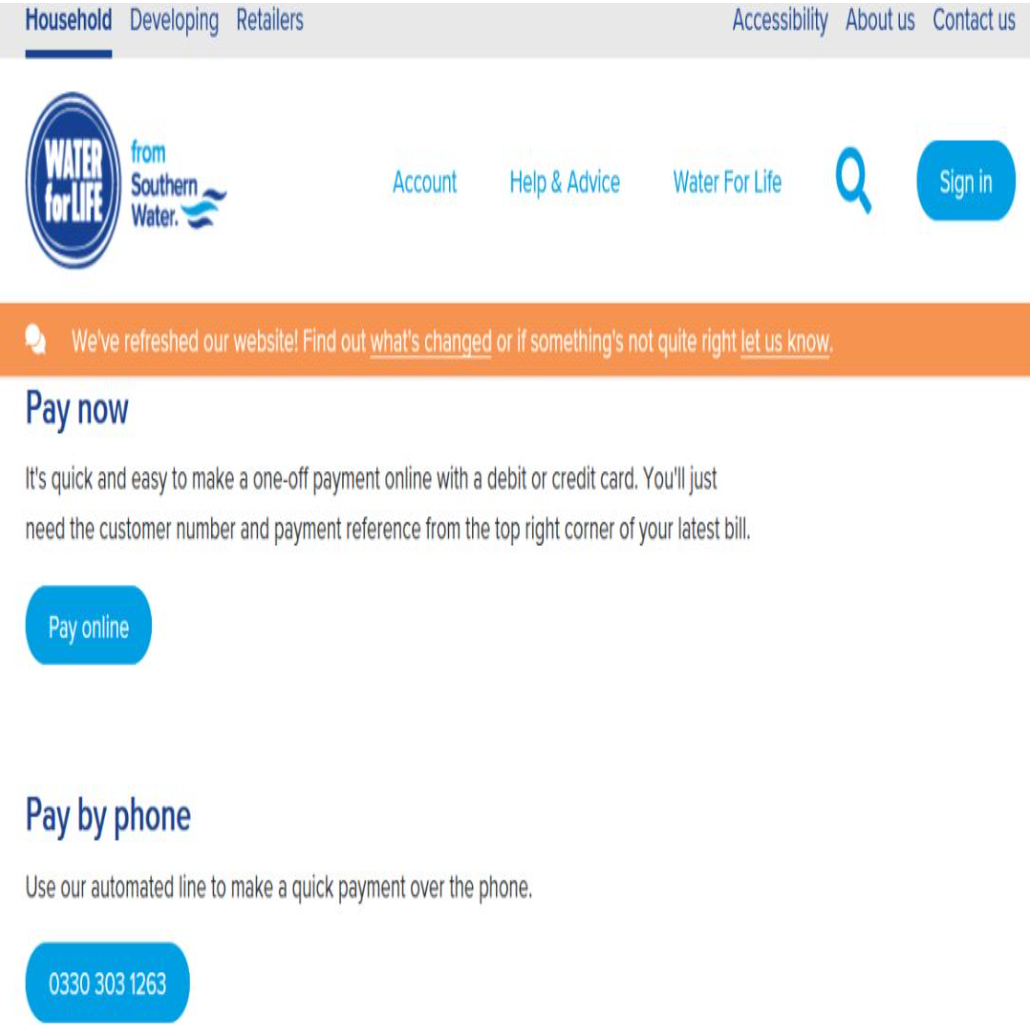
If you are an unmetered water user, meaning you are on an unlimited usage plan, you will receive a single water bill each year in February or March. This bill is typically due for payment in April. If your property has a water meter, you will generally receive two bills per year.
So, how can you find out which water company supplies your area?
Use the UK water company lookup website:
https://www.water.org.uk/advice-for-customers/find-your-supplier/
Aside from identifying your water supplier, this website also provides information on water quality in the UK and other details.
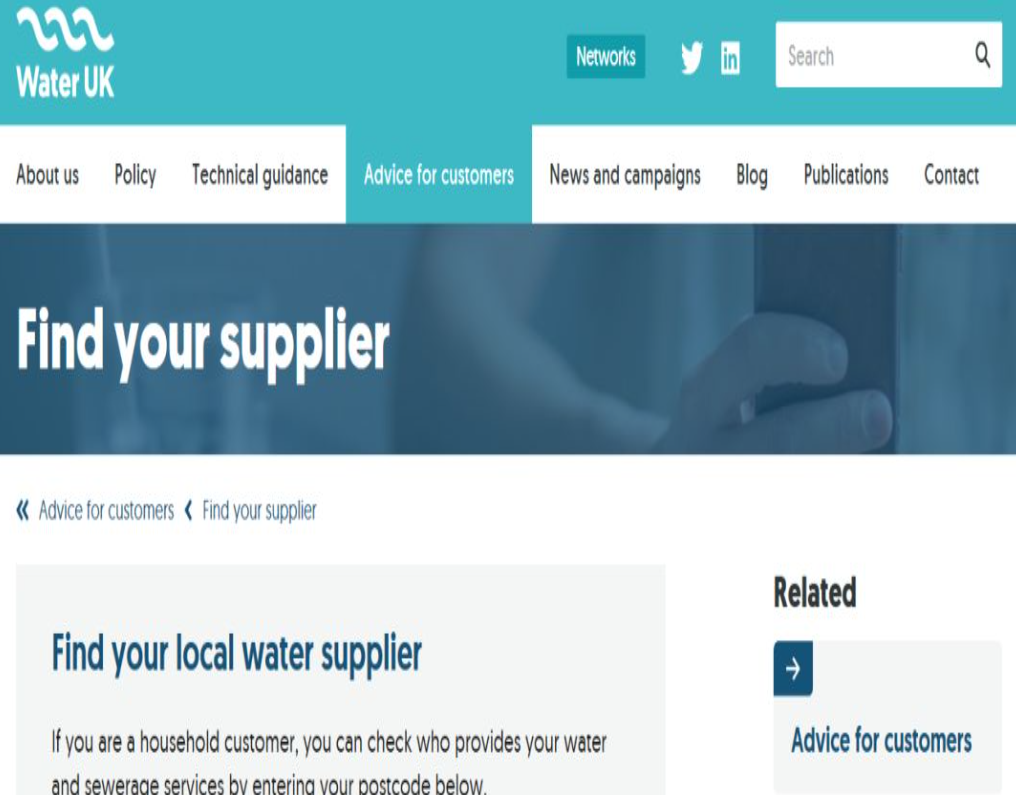
To put it simply: confirm with your landlord or letting agent the water meter reading before you move in, and establish whether you are on a metered or unmetered tariff. When you receive your water bill, just pay it as instructed. That's it – it's as straightforward and hassle-free as that.
So, how do you read a UK water meter?

When reading the water meter, you only need to note down the numbers in the black boxes as shown in the image above, or simply take a photograph. The water meter typically has four or five black boxes, representing a string of digits. In the following image, the meter reading is 00089. The red digits do not need to be recorded:

The numbers in the black boxes of the image above show how many cubic metres of water you have used. You are charged for each cubic metre used, so you only need to record the numbers from the black boxes. The numbers in the red boxes record tenths and hundredths of a cubic metre and do not need to be recorded. When taking meter readings, it's generally sufficient to do it once a week, at the same time each week. Record the numbers in a notebook or take a photograph.
How to pay electricity bills in the UK?
The process for paying electricity bills is quite similar to paying water bills. Before you move in, take an initial meter reading and photograph it as a record. You will need to provide this number when registering for an account. Once you receive the electricity bill in the post, you can register an account to make a payment, or simply pay using the information provided on the bill, which will include details like the electricity company's website and name.
TenLitCat reminds you that it's a good idea to try and take a meter reading each month and write it down. While it's not absolutely essential, you must definitely take one reading when you first move in. Also, remember to take your own meter reading before making each payment after receiving a bill. Be sure to note it down or photograph it, and check if it matches the number on your bill. This is because many electricity companies issue bills based on their own estimated usage, known as an 'Estimated bill', which can often be higher than your actual usage. In this case, you need to provide your reading to the electricity company so they can determine your actual charges. However, if you've already paid based on the estimate without realising, don't worry; just clarify it with the company, and any overpayment will be credited towards your next bill, or any underpayment will be added.
Furthermore, when you move out, you must also take a final meter reading on the day you leave. Record it and take a photo.
Most of us international students in the UK are renting rather than buying property, so we don't need to purchase meters or anything like that; rented properties come fully equipped. Furthermore, most rented properties aren't newly built. Student accommodation usually includes all bills, which is why the rent is often higher. It's also common for student halls to have restrictions on heating usage times, and cooking methods that produce a lot of smoke or vapour (like vigorous stir-frying common in some cuisines) are often not permitted.
There are also many electricity companies in the UK. The payment methods for electricity bills are quite similar to those for water bills, generally including:
Paying directly via bank transfer using a credit or debit card.
Making a payment over the phone, having your bank card and electricity account number ready.
Setting up an account on the website of your electricity supply company to choose either direct debit or to manage and make payments through your account.
Paying at a bank or a Post Office.
The image below shows an example of an electricity and gas bill:
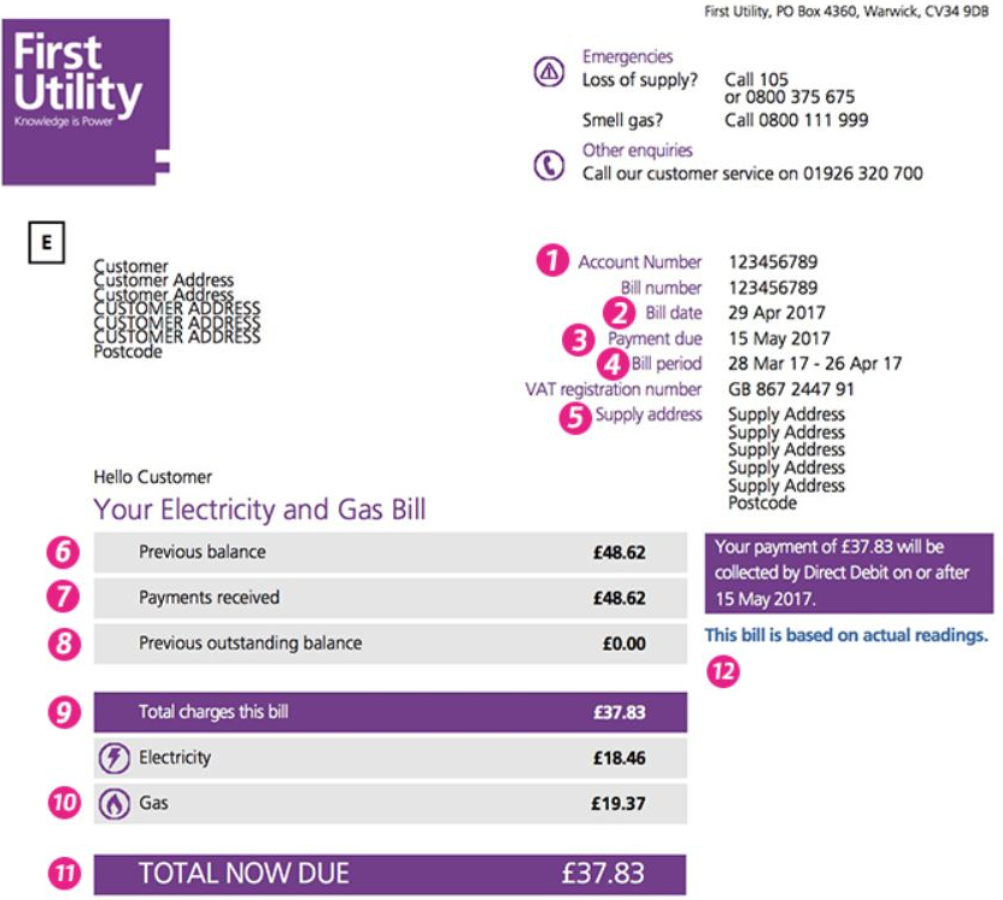
The numbers 1 to 12 on the bill in the image above represent:
Account number: Your account number. Remember this number as you will need it when contacting the company or making payments online.
Bill date: The date the bill was issued.
Payment due: The payment deadline for this bill.
Bill period: The billing cycle, which can be monthly, quarterly, or annual.
Supply address: The address for which you are paying. Check carefully that your address is correct.
Previous balance: The outstanding balance from your last bill.
Payments received: All payments you made towards the previous bill.
Previous outstanding balance: Any arrears you had from before.
Total charges this bill: The total cost for electricity and gas on this bill.
Services: The services you are paying for and the individual cost for each service.
Total: The total amount you currently owe.
Direct debit: If you pay by Direct Debit, this section states how much will be deducted from your account and the date the payment will be taken.
If you are unsure which electricity or gas supplier to use, there is a comparison website that can help you find the cheapest provider in your area.
First, visit the website: https://www.uswitch.com/
Once on the website, as shown in the image below, enter your postcode. Then, follow the prompts on the website, providing details such as your estimated usage and your approximate monthly budget. The system will automatically compare the prices of different suppliers for you.

So, how do you read an electricity meter in the UK? How is it done?
There are four main types of electricity meters in the UK: digital meters, electronic meters, dial meters, and smart meters.
Digital Meter
The image below shows a typical digital meter. Write down the numbers from left to right, ignoring any that are red or surrounded by a red background:

If your electricity supplier offers you a lower off-peak tariff, such as ECO20:20 or Economy 7, your meter might display two rows of numbers, as shown in the image below:
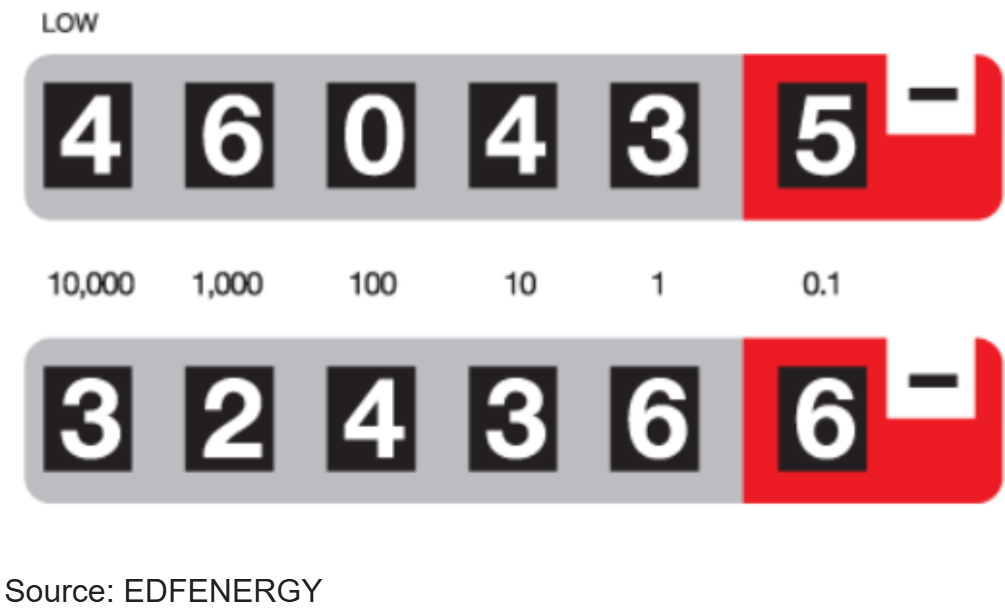
If your meter has more than one row of numbers, like the one in the image above, write down all the numbers in each row from left to right, ignoring any that are red or surrounded by a red border. Your previous meter reading on the bill will indicate which row corresponds to the 'day rate' and which to the 'night rate'.
Electronic meter
The image below shows an electronic meter. Some of these meters have a cycle display button which you need to press to view the reading, while other models automatically scroll through the displays, including the reading.

For a meter with two rows of numbers, write down all the digits on each display from left to right, ignoring any red numbers or those with a red background. Read from left to right, disregarding the red digits.
Dial Meter
The image below shows a dial meter. Each dial rotates in the opposite direction to the previous one, as indicated by the orange arrows above. Before reading the meter, check the direction of the dials, as they may not be exactly as described here. Each dial on the meter rotates from 0 to 1 through to 9 and then back to 0. For the meter in the image below, the reading, taken from left to right, would be 44928. The first dial shows 4, the second shows 4, the third shows 9, the fourth shows 2, and the fifth shows 8. Ignore the final dial.

Therefore, the correct way to read a dial meter is:
Read the dials from left to right.
If the pointer is between two numbers, always record the lower number. For example, if the pointer on the first dial is between 4 and 5, write down 4.
If the pointer is directly pointing at a number, write down that number. For example, if the second dial is pointing directly at 5, write down 5.
If the pointer is positioned between 9 and 0, write down 9 and reduce the reading you've already taken for the dial to its left by 1. For instance, if you initially recorded a 5, reduce it to 4.
Ignore the far right, or final, dial.
In summary, regardless of the type of electricity meter you have in the UK, you need to regularly submit meter readings to your electricity supplier yourself. This ensures your bills are accurate and not based on over-estimation, helping to prevent any related issues.
Smart Meter

A smart meter automatically sends the meter readings to your supplier, so no manual reading is required.
How to pay gas bills in the UK?
Many UK electricity suppliers also provide gas. Some properties in the UK don't have a gas supply, but it's better for rented accommodation to have gas, as heating with electricity during winter can be very expensive. The payment methods are the same as those for electricity and gas mentioned above, so we won't elaborate further here. The price comparison website mentioned in the electricity section also applies for comparing gas tariffs.
So, how do you read a gas meter?
From my experience in the UK, I found that many people don't know where their gas meter is. You can ask your landlord or letting agent about its location before you move in. The gas meter is usually found in the kitchen, hallway, a cupboard, or within the meter cabinet. The location varies depending on the property's layout.
There are generally three types of gas meters: dial meters, smart meters, and digital meters.
Dial Meter
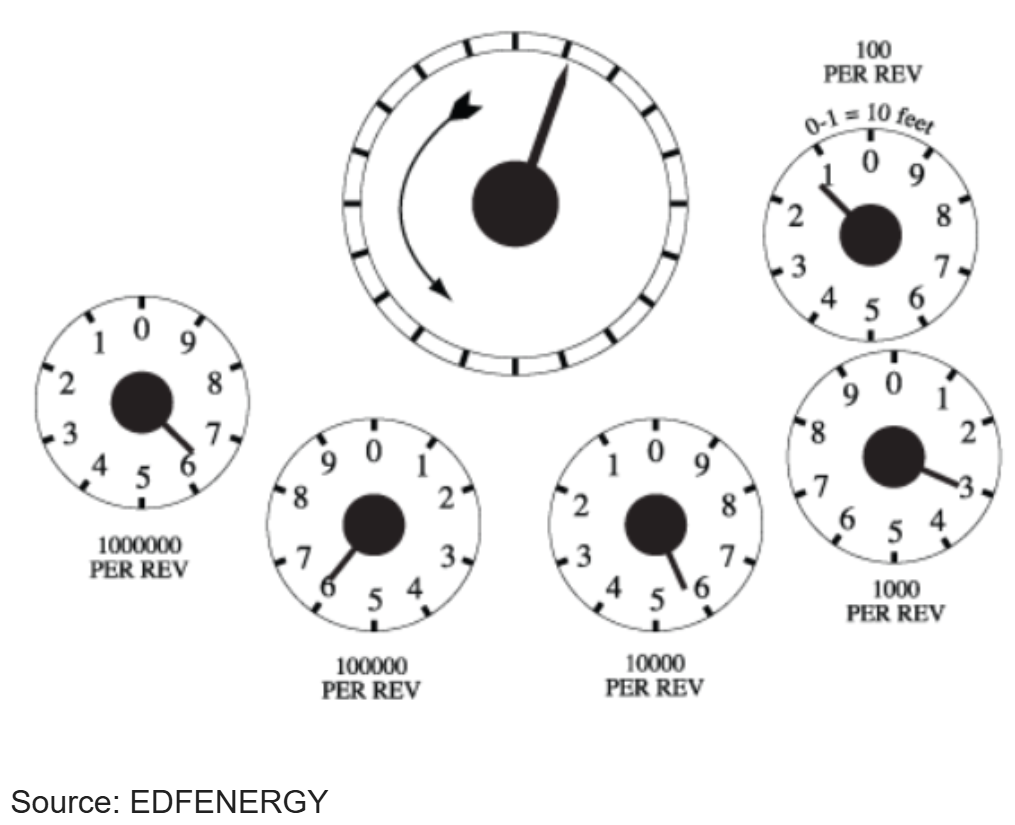
The correct way to read the meter is:
Read the dials from left to right.
If the pointer is between two numbers, always record the lower number.
If the pointer is positioned between 9 and 0, write down 9.
Ignore any red dials, any dial marked '100 per rev', and the largest dial.
Therefore, the reading for the meter in the image above is 6653.
Please note: each dial rotates in the opposite direction to the previous one. Before taking a reading, check the direction of the dials on your specific meter, as they may not be exactly as described here. Each dial on the meter rotates from 0 to 1, through to 9, and then back to 0.
Digital Meter
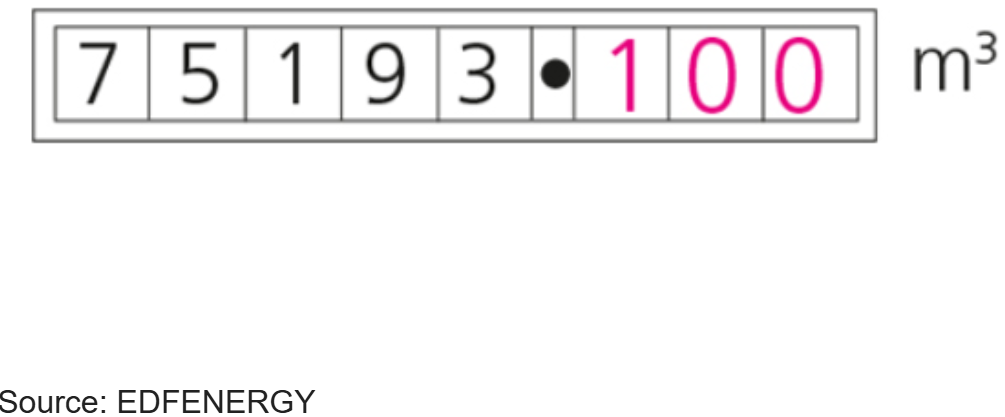
The correct way to read a digital meter is:
Read the numbers from left to right, ignoring any red digits displayed, as shown in the example image.
Ignore any printed zeros.
Omit any numbers that come after a decimal point.
Smart Meter

Smart meters automatically send readings to your supplier, so no manual reading is required.
TenLitCat reminds you again: after moving house in the UK, you need to register for new water, electricity, and gas accounts at your new address. The process is the same as described above. Postal bills can be very slow to arrive, sometimes taking several months, though this depends on the specific circumstances. Remember to ask your landlord or letting agent which utility companies supply the property, whether you can switch suppliers, if there are valid gas and electrical safety certificates, how to pay the bills, and anything else you need to be aware of.
If you receive a bill for your property with outstanding debt on it, don't worry. You don't need to explain this to the utility companies. Simply provide the bill to your letting agent or landlord. Your liability for utilities starts from the date you moved in.
TenLitCat strongly emphasises: do not delay payments. All energy companies can apply to the court for a liability order to enforce payment. The amount you owe can also increase significantly, as these companies may pass your debt to a collection agency. For example, if you have an outstanding electricity bill of £1,000 that remains unpaid for a year or two, the electricity company can hand this debt to a collection agency to recover the money from you. This will also damage your personal credit history, which can affect future loan applications, visa applications, and more.
You must remember to take meter readings and photographs before you move in, and also take final readings and photographs when you move out. When moving out, you also need to close all your water, electricity, and gas accounts.
If you are in a shared house with several people, and you are on good terms, you can safely assign one person to handle all the payments, with the others transferring their share to them each month. However, if the relationship isn't great, you can register an account on the utility's official website with all your names, and all three tenants will receive the bills. If the relationship is just average, or genuinely not good, or if you are living with the landlord, TenLitCat would advise you to take meter readings yourself every month.
Utility bills in the UK operate on a system of adjustments for overpayments or underpayments. So, if you overpay, you can apply for a refund later. A situation could arise where a landlord, letting agent, or flatmate (say, Person A) states the utilities are £100 per month, and indeed £1,200 is paid over a year, but the actual cost of the utilities was only £600 for the year. In this case, the landlord, agent, or Person A could apply for a refund of £600 after you have moved out or graduated.
TenLitCat reminds you once more: if you notice your utility bills are unusually high, or you feel your usage doesn't justify the cost, remember to take your own meter readings and inform the utility company, requesting they send a new bill. It is very possible the bills you received were based on the company's estimated readings, not your actual usage.